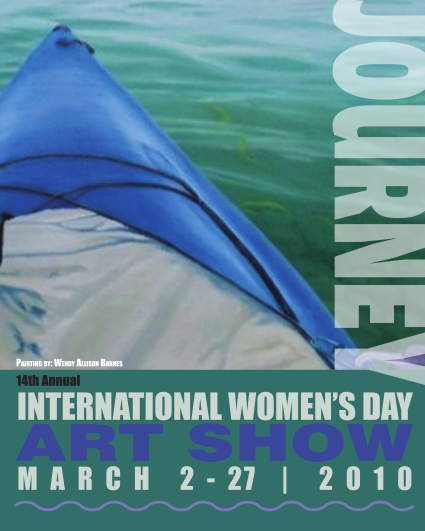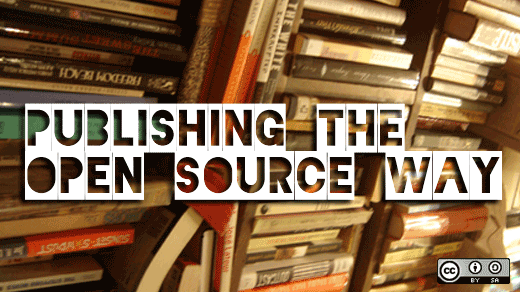This is the second part of a two-part series examining an open source publishing project--an art book--as a fund-raising effort. If you missed it, you might want to catch the first half in our archives.
Publishing
Print-on-demand self-publishing companies abound. The trouble with most of them--if you want to stick with open source--is that they
either require proprietary (Windows or MacOS) components or their support for PDF input is intended only for skilled, technically-competent users.
Two online publishing companies that provide no additional barriers to users of open source software stacks (aside from the possible use of Flash) are CreateSpace (owned by Amazon) and Lulu . Both will get your publication listed on Amazon (if that is your goal), both feature copious written instructions and peer discussion (especially helpful to first-time authors), and neither requires any up-front payment.
Online publishing companies usually offer the option of uploading images into their wizard. This seems simple at first, but it has limitations. We discovered the hard way that Lulu's wizard did not see JPGs if you saved them under the alternate acronym, JPEG. In addition, most wizards are really intended for people who want to do scrapbooking or a photo album (publishing for personal use), and while you can make them do things for which they weren't originally intended, it can be very painful. For example, some wizards do not offer pagination; a preferred page color may be unavailable, or page templates may insist on specific picture shapes. However, all offer a wide selection of page layouts and, if you surround your images with a like-coloured border using the GIMP, you can cheat on that shape restriction quite a bit.
One advantage of a wizard is that your picture is guaranteed to be as clear as possible, given what you provide (no copy of a copy fade). The disadvantage is that photo books tend to be more expensive.
As with any first-time project, there were challenges. For this particular book, I wanted a black background to enhance the artwork. In order to get that, I had to choose a wizard that did not have automatic page numbering. My first attempt was with Lulu's wizard.
One obstacle occured when one-too-many pages were accidentally added during upload, the system automatically reverted to hardcover rather than warning that the book was over the page-limit. When I noticed the error and reduced the page-count, I had to redo the whole book because it had also reverted to a default wizard.
Then I tried to use Lulu's print-ready PDF (generated from the hardcover version created in their wizard), in the hope of uploading parts of it to their less-expensive but still quality method of printing. The problem was that publishing companies save your wizard draft PDF at 72 dpi, so you can't just take it to another publisher. It was back to the drawing board.
Knowing what we now know about this wizard–its limitations and strengths (which they all have)– most photo wizards would probably be recommended only for very small books or for scrapbooking.
In the end, to facilitate the creation of a less expensive softcover book, we abandoned the wizard option in favor of using our graphics and layout programs to create a PDF. With our print-ready PDF, we were ready to publish.
The cover
While both publishing companies offer a variety of pre-designed covers, Lulu's cover wizard seemed more flexible, and a better choice for this project. As with the book's interior, the cover was designed off the site and uploaded as front and back images. For the front page we used the poster that advertised the show. For the back cover we arranged a selection of the images which appear inside the book.

Post-publication features
Publishing companies may also offer different post-publication features. Some sites offer a free ISBN. Lulu also offers easy submission to Google Book Search and integrated support for Creative Commons licenses. A small disadvantage of CreateSpace is that they print the word “DRAFT” in large letters on the last page of the book you are required to order prior to release. Lulu does not do this, so if the book looks really good you can sell that one too. Another disadvantage can be CreateSpace's limitation on the number of pages allowed in a full-colour book submitted by any means.
Online publishing is always evolving. There are quite a few companies now who are able to print one or a number of books on-demand. It can pay to look around. Lulu was the first to do this and while they no longer offer live help, Lulu still appears to be the easiest to navigate for a first-time author.
The Journey's end
The most time-consuming aspect of the project was coordinating 72 artists and their work. This un-juried show included an eclectic mix of images submitted by artists ranging in age from 14 to 80, at all levels of professional development. Facing pages had to harmonize. One image could not overwhelm another. An important goal of the book was to give each participant an opportunity for full self-expression. Each artist was asked to proofread the copy accompanying their artwork, and each wrote and proofread their own bio.
The eclectic nature of the book posed other interesting challenges for layout. We had a variety of sizes and shapes of artwork and different lengths of stories and bios. There were some artists who wanted to include their portrait and others who didn't, and a few didn't want a biography at all. Some requested specific formatting for their copy while others reminded us that graphic design should be invisible.
To equitably accommodate a variety of differently shaped images, we chose a square format for the book. In the end, our open sourced art book was made using Scribus, the GIMP, and a PDF converter. The final PDF was uploaded to Lulu. A draft copy of The Orillia Women's Show book, The Journey, has been ordered and approved.
The project took eight months to complete (with only a few false starts). Fortunately, Internet publishing allows you to save progress with your publisher and return to the project as time allows. We found it useful to have a hard copy to reference when numbering pages, creating an index, and cross-referencing biographies, so we ordered a preliminary draft. It would have been just as easy and much cheaper to print out our own working copy, but we also wanted to see what Lulu would do with a download from their wizard printed through their less expensive PDF method.
By the time the approval copy was ordered several methods of production had been tried. Each time, the process went faster and confidence increased. With stories proofed and approved, layout already planned, and images ready for publication, a 100-page book could easily be assembled within a few days.
Cost
While the cost of a project like this can be nil if you never buy a book, in this case it cost about $100 Canadian for a draft, working copy, approval copy, and two books to send to the National Library of Canada. This included significant postage, HST (Ontario Canada's harmonized sales tax), and the cost of exchanging Canadian for American money. Costs were slightly offset by placement of business cards in the back of the book at $10.00 per placement.
Buying in bulk is another way to save money on individual purchases, but large up-front costs can put a book signing promotion out of reach for many artists.
Promotion
Once the books have been released to the public, it is up to their writer/editor to promote them. Some self-published authors do well with the use of blogs and Internet and social media networking. In the case of The Journey, we rely on the artists to spread the word at their own shows, in their classrooms, through their websites and by word-of-mouth.
One advantage of doing a group book is that a number of contributors can pool their resources to make promotion happen. For the benefit of participants, one group purchase was organized to ensure that all of the artists had an opportunity to receive an affordable copy of “The Journey.” The book is also available to anyone online at lulu.com, where a full preview is currently offered .
Due to the size of the file, it takes an excruciatingly long time for the preview to appear once you click the 'preview' button. As the project mellows, we will switch to a smaller preview, less likely to discourage casual browsers.
To further extend the reach of the book, we decided to publish under a Lulu ISBN. However, using an ISBN from the publishing company allowed less freedom in setting an affordable price for the artists, since Lulu must keep a consistent price across the board. In the end this translates into smaller profits with a wider reach, or larger profits on books purchased directly from Lulu.
Our plan was to turn the book over to the Women's Shelter once it was published, so that they could passively receive royalties. The problem was that once we chose to put it out through multiple distributors and handed the project to the Shelter, the artists themselves would no longer be able to access copies at a price that would facilitate individual fund-raising locally.
To solve the problem, we created a special edition available on Lulu by direct access, which was marked up only one dollar. Greenhaven still receives a dollar directly from the publisher for each of these purchases, and the artists now have a better chance of fund-raising locally.
Royalties for The Journey will be channelled directly to Greenhaven Women's Shelter in Orillia, Ontario, Canada. Due to the high cost of publishing full-colour books, the shelter will only receive a dollar from each $25.99 U.S. purchase by the artists, though they will receive $8.96 of the $35.90 price tag if the book is purchased directly from Lulu, or $.61 on the retail print market from other locations. (The author controls royalties, over and above retailer mark-up.) The rest of the cost of the book is absorbed by production and shipping. Taxes, where applicable, will be added to the cost.
A number of artists are excited by what they've learned from the experience, and may be willing to try developing or publishing their own works using open source software. It is unlikely that anyone will get rich publishing an art book, but the exercise has certainly opened more doors to creativity.
If ever there was a time for artists to do what they do best–step outside of convention–it is now. Fortunately, the way has been paved by programmers who contribute a variety of open source software that facilitates artistic expression. Now our group will see whether or not publishing through an online publishing company can be a valid method for fund-raising.







Comments are closed.